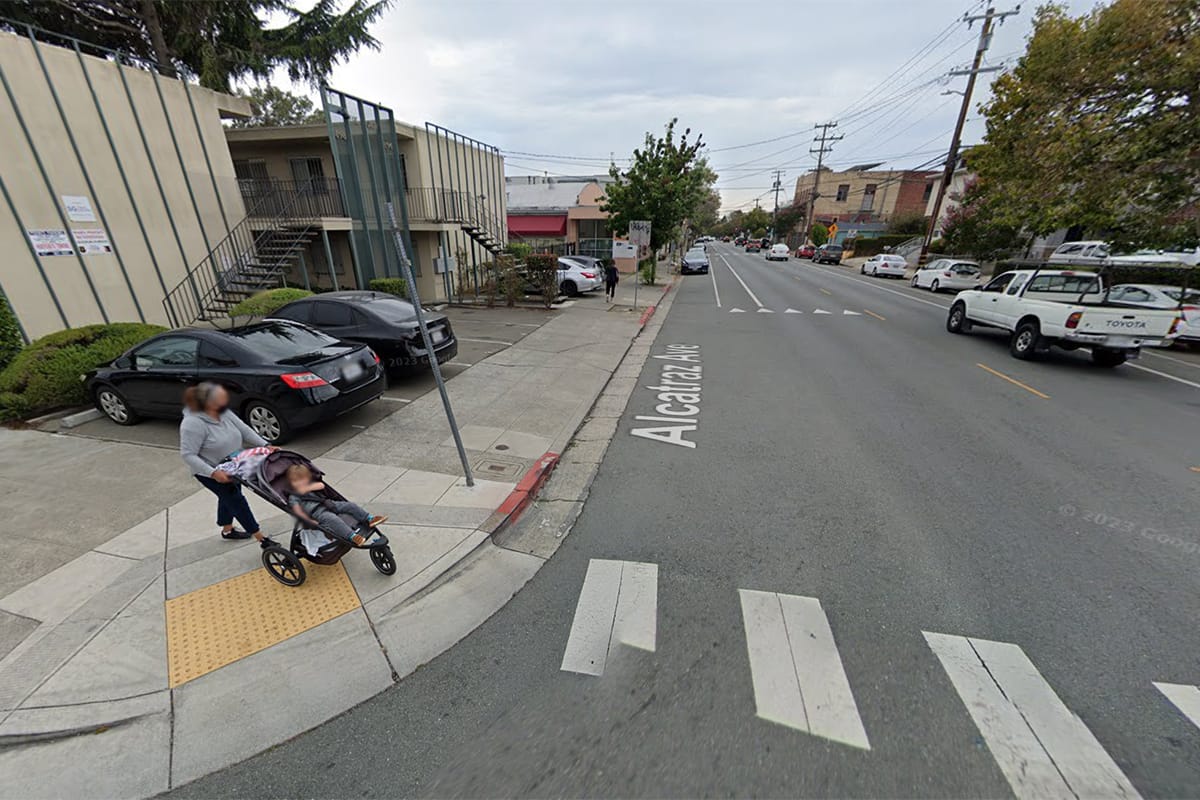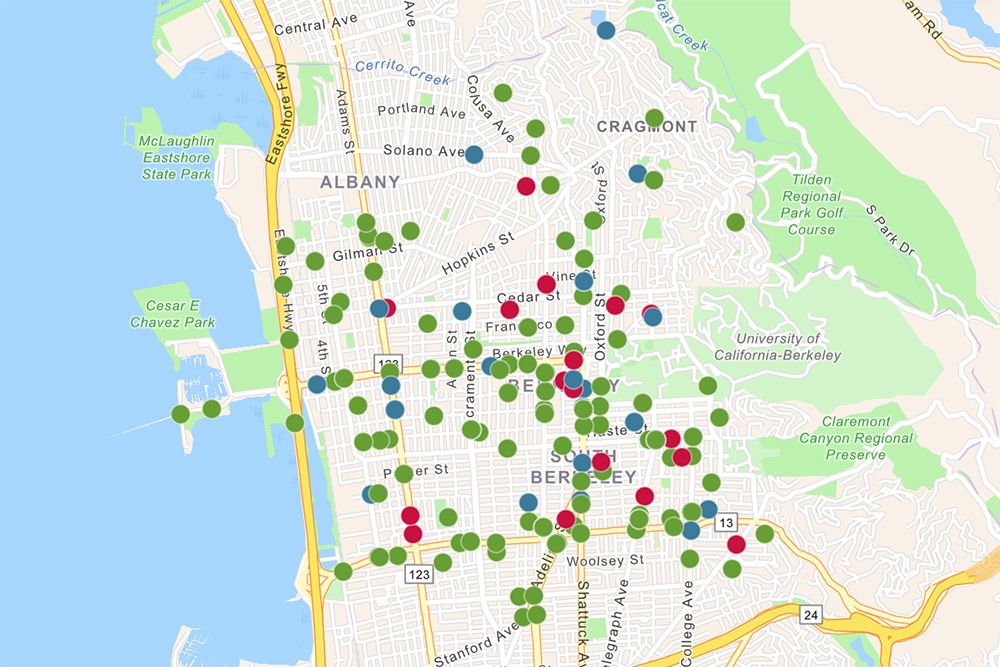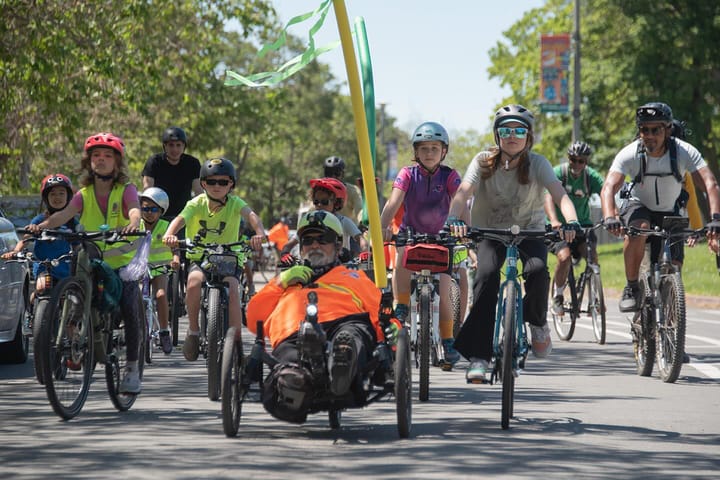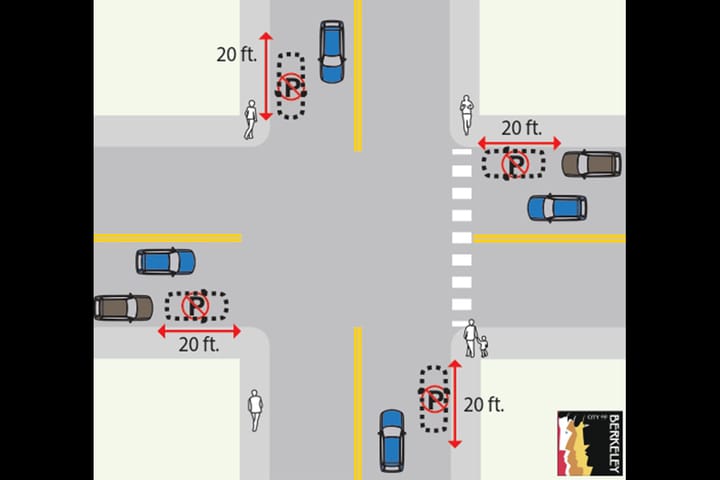Hit-and-run driver sends baby to hospital with broken bones
The driver initially stopped but decided to flee, BPD said. Pedestrian Safety Month kicked off this week with several traffic ops planned.

Berkeley police are investigating a hit-and-run collision that sent a 9-month-old girl to the hospital this week with a head injury and broken bones, authorities report.
The report comes just as Pedestrian Safety Month kicks off in Berkeley, with numerous traffic safety events planned by police in the coming weeks.
On Monday, Berkeley police responded to Dover Street and Alcatraz Avenue at about 8:15 a.m. to investigate the hit-and-run crash.
BPD said a 33-year-old man, who was crossing Alcatraz at Dover from the southwest corner, was pushing his daughter in a stroller when the collision happened.
The eastbound driver was described only as a man in a dark sedan.
The driver initially stopped after the collision, BPD said, but decided to leave and was last seen heading southbound on Dover Street.
The baby girl was taken to Children's Hospital Oakland "with injuries that were believed to be minor bumps or bruises," Berkeley police said. "Since that time, we have learned that the child actually has several broken bones as well as a head injury from the collision."
BPD asks anyone with information about the case to call the Berkeley Police Department at 510-981-5900.

Pedestrian Safety Month plans in Berkeley
This week, Berkeley police also announced Pedestrian Safety Month with five "education and enforcement operations" scheduled "to promote the safety of people walking."
BPD said the operations would focus on the "most dangerous driver behaviors" when it comes to pedestrian safety, such as speeding, illegal turns, failure to yield and running stop signs or signals.
“Drivers need to be aware of people who are walking," said Berkeley Police Traffic Sgt. Dave Harston. "Please slow down and never drive impaired. We all have places to go, so let’s remember that safety is a shared responsibility especially as our school communities get back in session."
In its announcement this week, BPD noted that pedestrian fatalities make up more than 25% of all traffic deaths.
Pedestrian fatalities peaked throughout California in 2022, with more than 7,500 reported — "the highest number since 1981."
(That number does not even account for all crash fatalities, as the state only classifies post-collision deaths within 30 days of a collision as traffic fatalities.)
On Tuesday morning, BPD held its first traffic operation at Martin Luther King Jr. Way and Blake Street.
Upcoming events are planned from 7-11 a.m. on Sept. 4 (University and McGee avenues); Sept. 10 (Bancroft Way at Fulton and Ellsworth streets); and Sept. 23 (San Pablo Avenue and Russell Street).
On Sept. 30, the pedestrian safety operation will run from noon to 4 p.m. at Monterey Avenue and Hopkins Street.
BPD: Advice for drivers
- Do not speed
- Slow down at intersections
- Be prepared to stop for pedestrians at marked and unmarked crosswalks
- Avoid blocking crosswalks while waiting to make a right turn.
- Never drive impaired.
BPD: Advice for pedestrians
- Be predictable.
- Use signalized crosswalks where drivers may anticipate foot traffic.
- Watch for approaching vehicles and practice due care crossing the street. At 30 mph, a driver needs at least 90 feet to stop.
- Make it easier for drivers to see you at night: Wear light colors and reflective material and use a flashlight.
- Be careful crossing streets or entering crosswalks at night or on busier streets with higher speed limits.
Funding for the program is provided by a grant from the California Office of Traffic Safety, through the National Highway Traffic Safety Administration.





